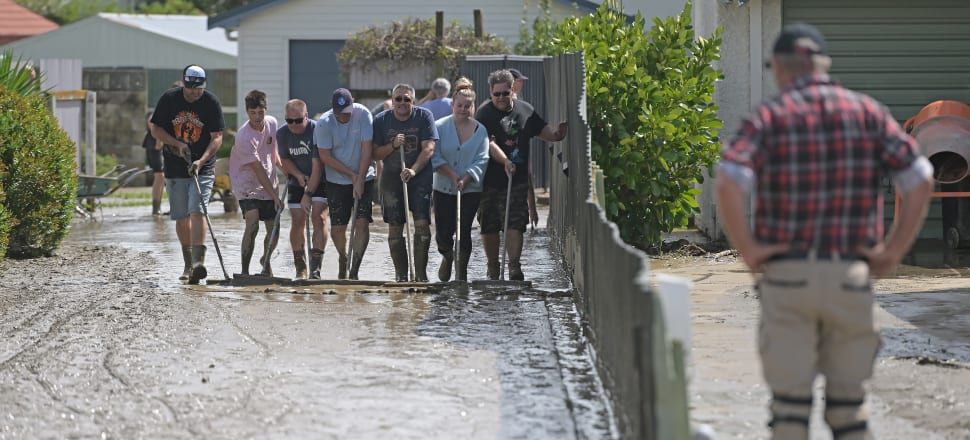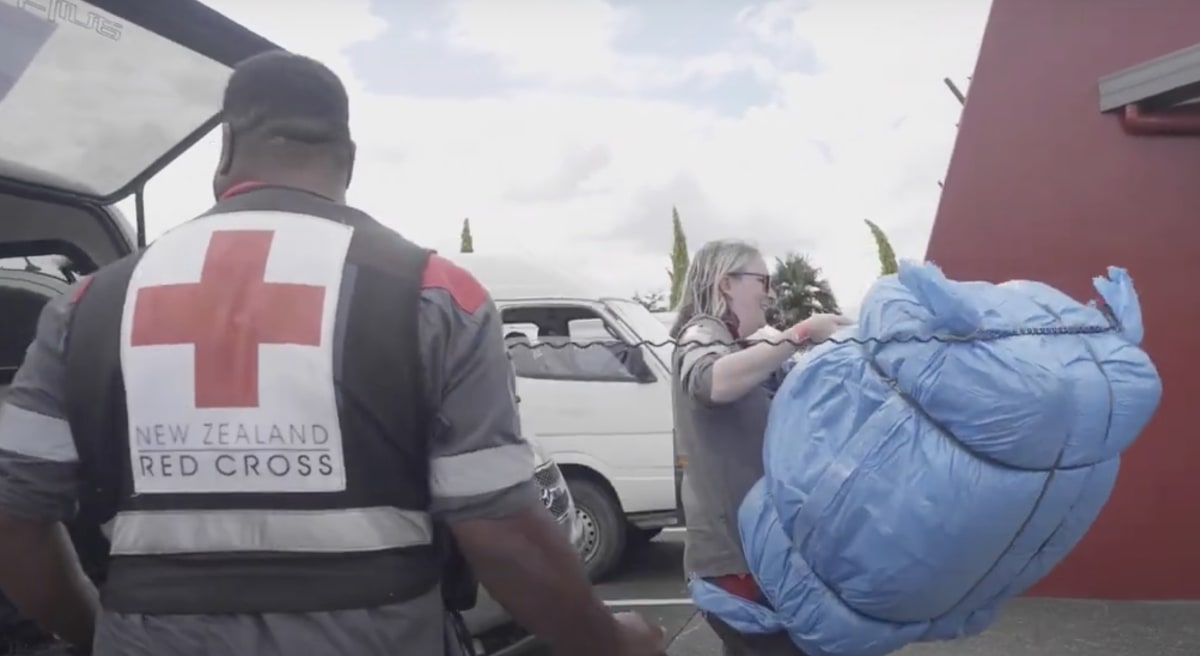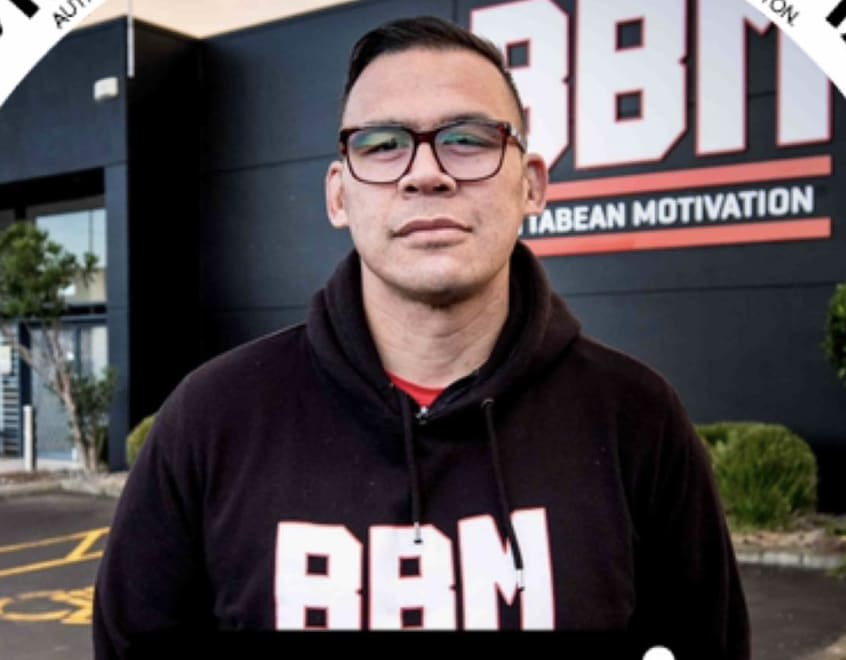
Only 10 percent of the Red Cross relief fund for post-Gabrielle recovery in Hawkes Bay has been given out - so what’s the hold-up? Matthew Scott finds out.
Volunteer organisers in the post-cyclone Hawkes Bay recovery are asking where the millions of dollars donated to the recovery effort is going as people are left to “shovel toxic silt one spadeful at a time”.
The Red Cross New Zealand Disaster Fund has collected almost $18 million in the past six weeks.
READ MORE:
* After the cyclone
* The toxic mile
Almost $2 million of that has been spent on a range of initiatives including psychosocial training for relief workers and providing dehumidifiers and home clean-up kits with brooms, cleaning products and PPE. More than half of the $2m goes to fund partner organisations on the ground, while close to $700,000 goes towards generators, first aid kits and other immediate community needs.
Part of that is a $1.1m contribution also announced by Red Cross this week to go specifically towards house recovery in the particularly hard-hit Wairoa - septic tank cleaning, electrical repairs and replacements for pipes and heating systems.
Meanwhile, the charity has put 5000 hours of work into the effort, much of which came from volunteers.

But while the work done by Red Cross has been significant, it represents only around 10 percent of the committed cash coughed up by Kiwi individuals and businesses, and Hawkes Bay residents want to know what’s taking so long.
Chloe Johnson is the volunteer coordinator behind the Cyclone Hawkes Bay Help page. It’s quickly become a well-used forum where more than 12,000 people offer volunteer work or ask for help.
Johnson said it had become “the glue of the recovery”. She started it up a few days after the cyclone when she was feeling helpless and unable to physically help due to being eight months pregnant.
She said while she and other organisers don’t have any issue with how the money has been used so far, they want to see it distributed more quickly.
“There's four or five different national or regional funds which we know are holding millions of dollars from the general public, and people are still shovelling toxic silt one spade at a time,” she said. “There's a desperate need for financial aid, and it's available - it’s just not being distributed.”
Six weeks into the recovery effort and the energy levels of many in the region were flagging - they needed the money sitting in charity bank accounts.
“We didn't expect to have to keep the energy going for so long and we would have expected that the Government or the funds from these donations would have stepped in,” she said. “We are running out of fuel, we are exhausted, we are feeling abandoned.”
Meanwhile, Auckland community leader Dave Letele has had the efforts of his volunteer groups focused on the region since the cyclone first hit.
He asked three different marae whether they had received support from the Red Cross fund.
“One marae said they hadn’t seen [Red Cross workers], another marae said they just saw them drop off a wet dry vacuum and a dry cleaning and then nothing after that.”
Letele and his volunteers hadn’t witnessed Red Cross on the ground, and compared the visible impact of his own group to the charity titan’s efforts.
“We’ve had a fraction of their donations, something like half a million, but you can see what we are doing,” he said. “It’s about transparency. If that was a brown crew there would be a lot more questions about where that money is going.”

Red Cross has been releasing fortnightly statements showing how they’re spending donations. But while the charity has a broader plan of about a year’s worth of recovery including investment into future disaster resilience, some members of the community want more financial attention on the here and now.
New Zealand Red Cross general manager Shane Chisholm said that the huge area affected by the weather event, the diversity of communities within, and the complexities of rolling out a longer-term recovery plan would all take time to figure out.
“What we're finding is within each community there is a different sets of needs [which affects] to a certain degree the time taken to release the funds, because what we have learned in the past is the best way to engage and support a community to recover is to allow that community to lead,” he said.
“People may see that as taking longer than ideal, but it's really important that we take the time to ensure we are making the most of the resources that we have.”
Chisholm said it might have been six weeks since Gabrielle passed through, but many people were only now just shifting from an immediate response to a recovery phase, and this was where the bulk of the fund would be spent over the next year.
“There are a number of factors that might be contributing to that, including the local information out there for people to know where to go and how to engage,” he said.
“The other thing is Red Cross wants to work alongside other charity groups who are doing fantastic work in this space and the last thing Red Cross wants to do is duplicate what is already happening.
“We just didn’t want to roll in there with stuff that possibly wasn’t as effective as if we were to engage and do it right."
Around 95 percent of the Red Cross' overall funding would be put to recovery work, but there would also be some some put towards increasing the resilience of towns like Wairoa, Hastings and Napier in the face of inevitable future disasters, he said.
But while the organisation's plans do detail a broad suite of relief work, they haven’t given some Hawkes Bay residents the impression the money is being used well.
Newsroom asked Chisholm if this was a communications issue.
“You can never do too much communication in this space,” he said. “And possibly in retrospect all of our attention, our focus has been on delivery and trying to get things out there.”
He said Red Cross had plans for a new communication strategy in the future involving monthly public updates, although that was already on the cards before these kinds of complaints emerged.
Sharon Malaitai from Pacific community group Poly Active said she thought communication with the public had been an issue.
“To get to them I had to go through three different numbers. There were quite a few barriers put up,” she said. “That’s why the community just went on and did their own thing, as we couldn't wait for two weeks to get support.”
Malaitai has been helping out displaced RSE workers. She said some of them had been in conditions where there were 25 people to three towels. Some were given dried lentils to cook but didn’t know how - an issue Malaitai said lay with the cultural incompetency of some charity efforts.
It’s a position that’s left her heading anywhere she can to get help.
“When Government weren’t there to support us in those first two or three weeks, community groups turned to K Mart… and The Warehouse - but they all said they had already given to Red Cross.”
So that meant money that could have gone straight into her support work had already been collected to be distributed over time under the careful plans of a large charity organisation.
Perhaps these complaints will be answered by Red Cross’ plans for community group grants, which will give more decision-making power back to groups like Malaitai’s.
Until then, it seems the people on Chloe Johnson’s Facebook page are saying they want a bit more transparency from their benefactors as they slowly put their region back together.







